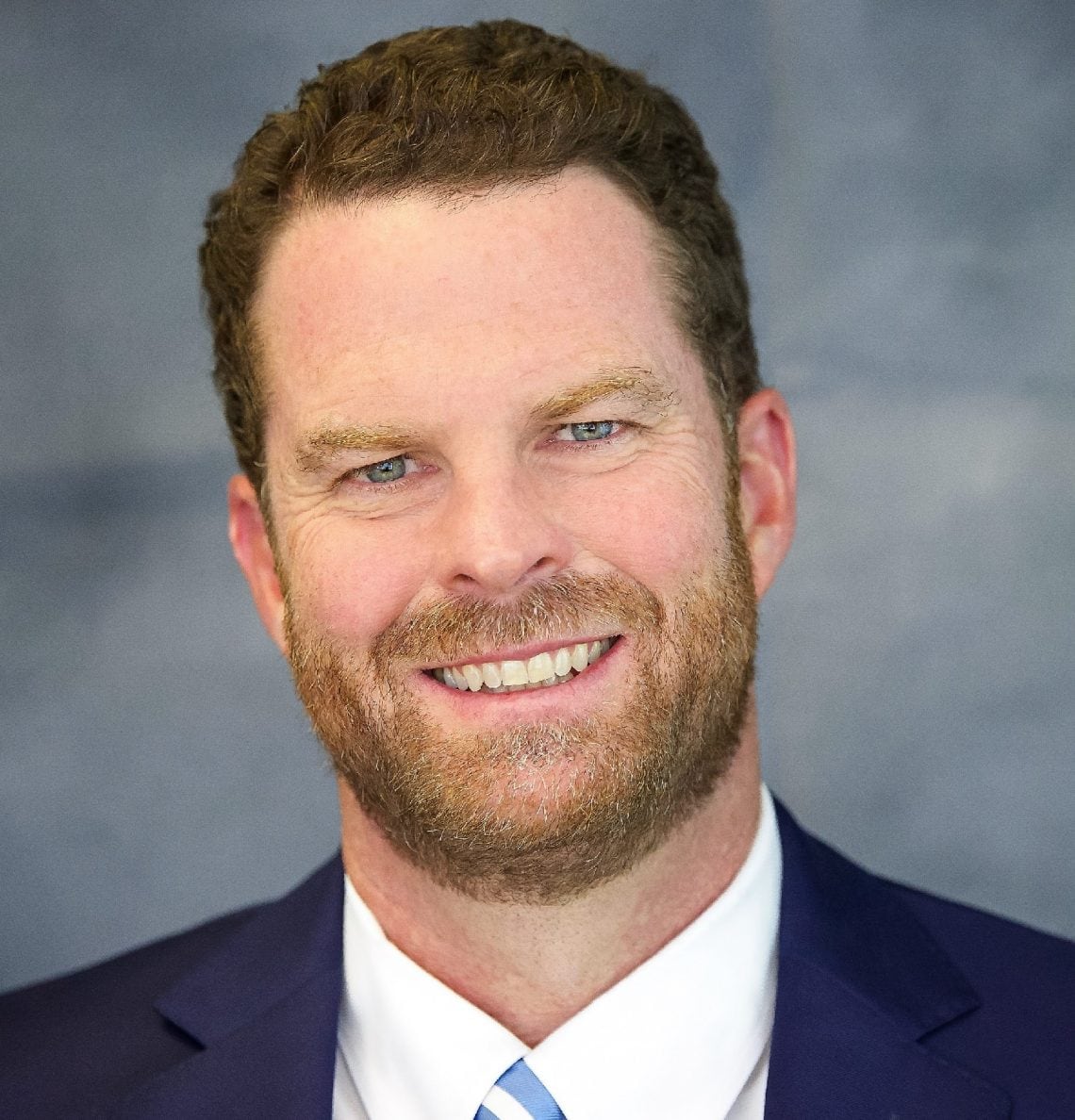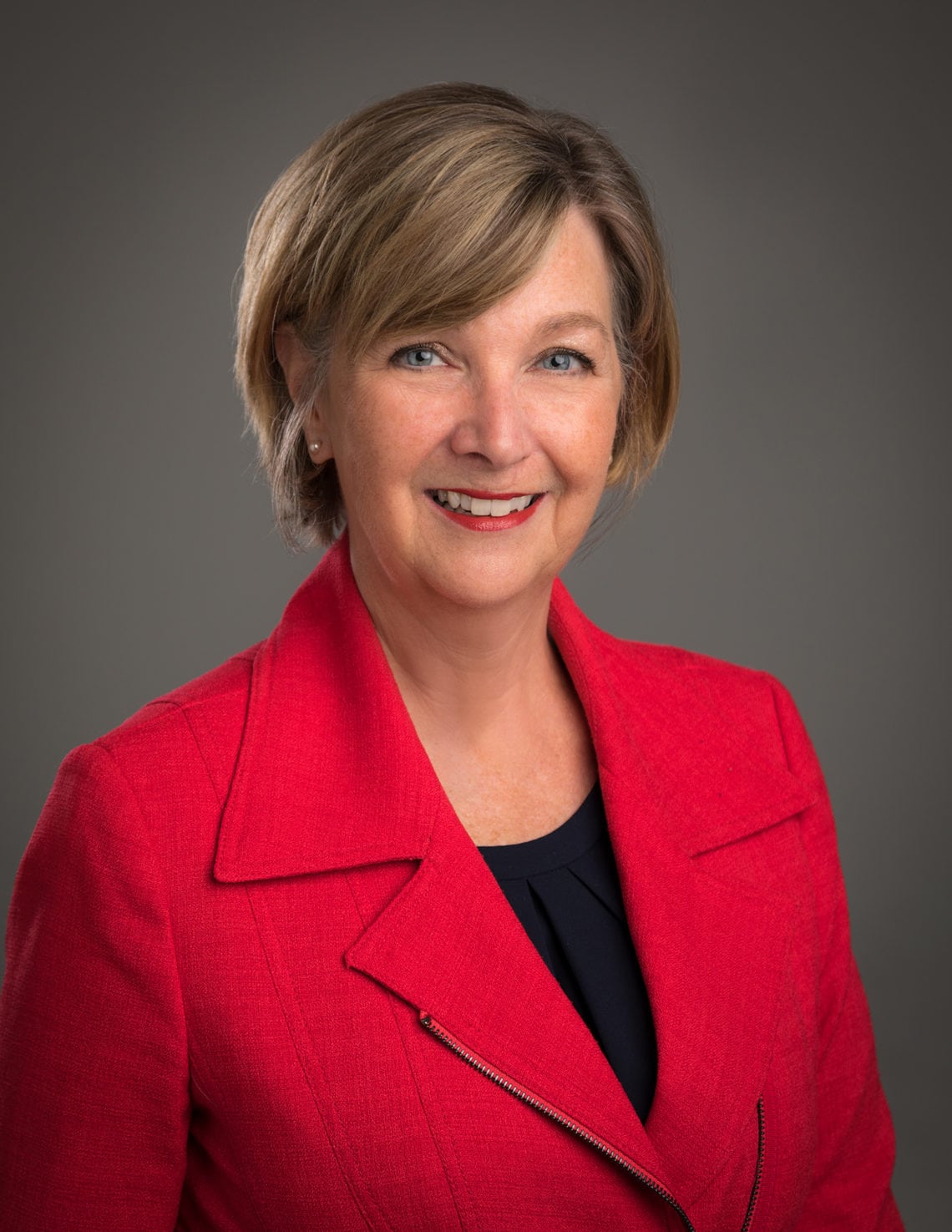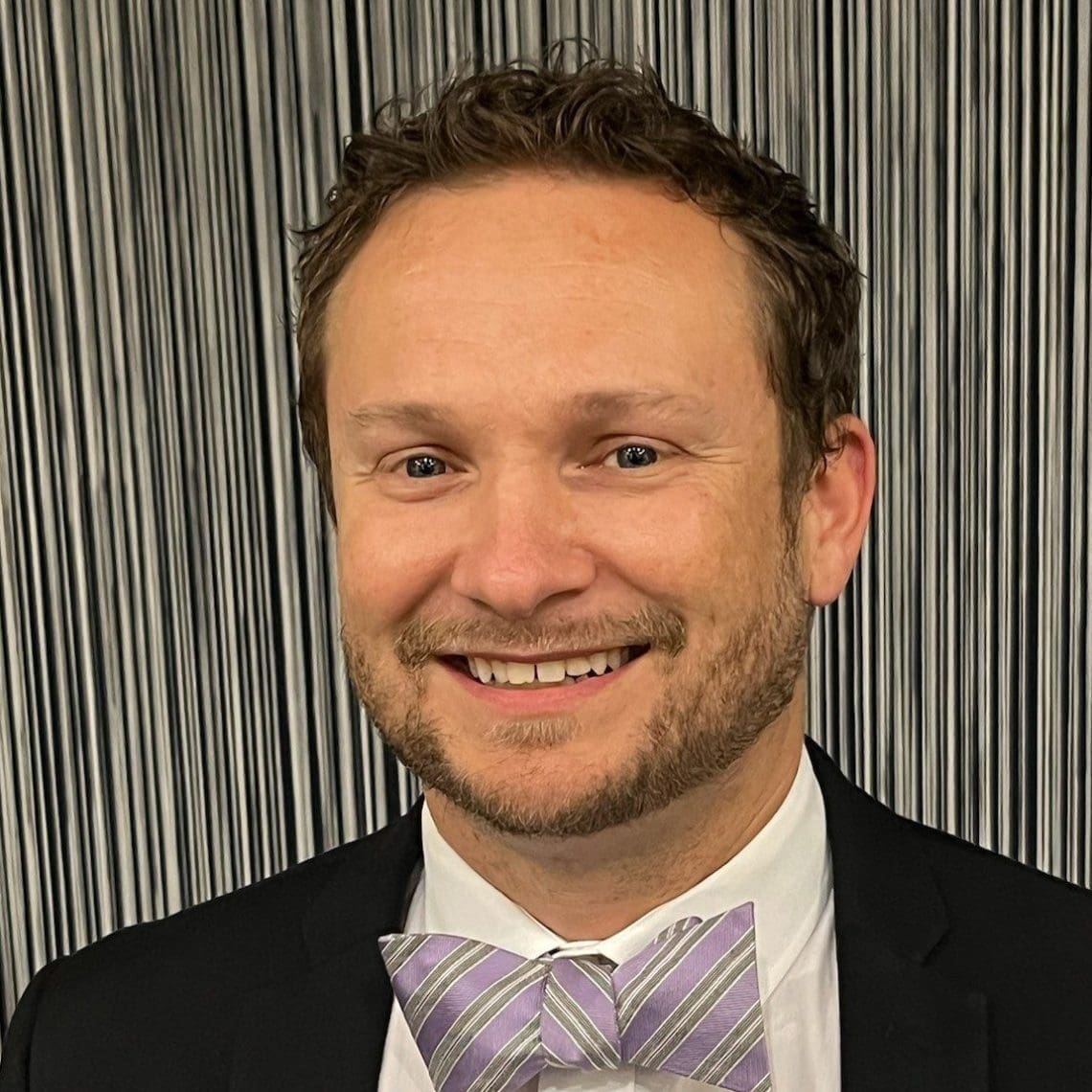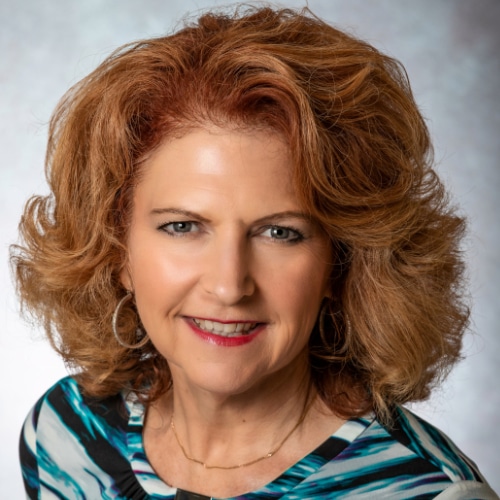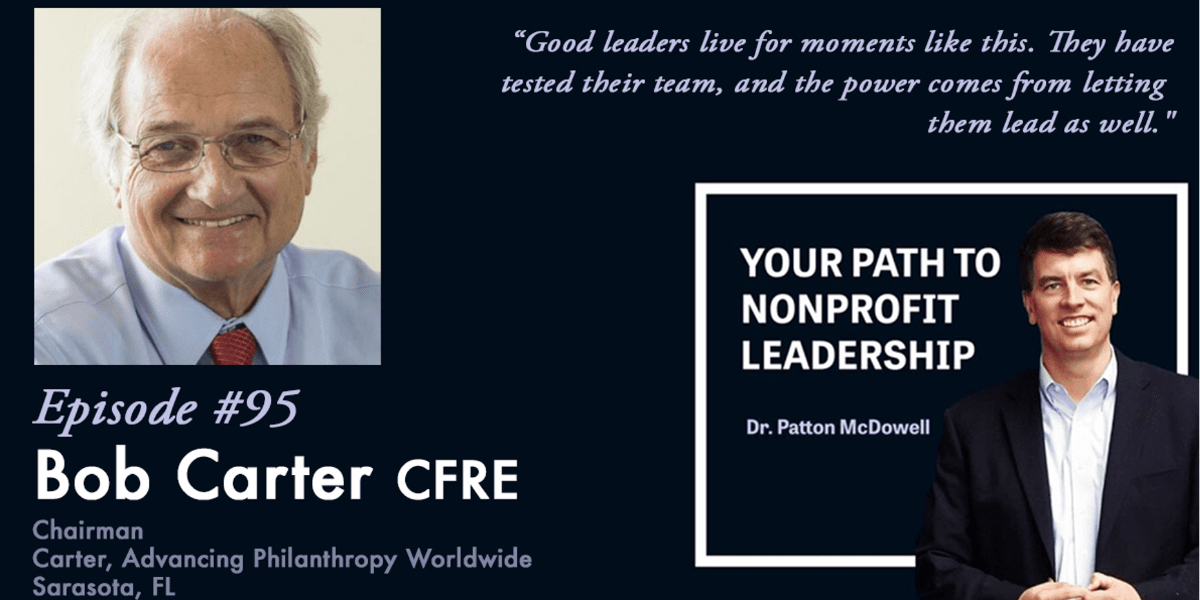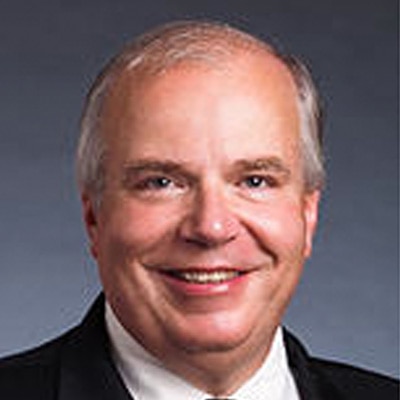In response to dozens of inquiries from our partners and colleagues, last month, Bob Carter, CFRE, Chairman, was interviewed by Steve Higgins, CFRE, President & CEO of Carter, in a webinar conversation detailing how to successfully fundraise in a recession based on both of their decades-long careers in the nonprofit sector and experience fundraising throughout multiple recessions.
In case you missed the webinar, here is the full video:
In this month’s blog post, we’re highlighting the top 10 takeaways from the conversation – though we highly recommend giving it a watch or listen, too – it is packed with helpful information and inspiring stories!
1. Philanthropy is resilient and endures, thanks to the human heart.
As shown in the graph below, philanthropic giving remains relatively stable when compared to the Dow Jones average. Total giving as a percentage of gross domestic product (GDP) also remains very stable in good and bad times, hovering around 2% of GDP.

During the 2008-2009 recession, philanthropic giving only dipped slightly when compared to the Dow Jones average. In 2010, Giving USA and the Indiana University Lilly Family School of Philanthropy reported a less than 4% dip in philanthropic giving from 2008 to 2009 (the graph above shows figures from their 2022 report’s adjusted data). That’s incredible when compared to the overall market, especially the real estate market, in which home values were down by 50% or more in some cases. In fact, the amount of money raised for the human services sector actually rose by 10%. How can that be? That’s the human heart.
I (Bob) got to know Carlton Ketchum a little bit before he passed away. One day, I was talking with Carlton about tax laws, and I’ll never forget when he said, “Bob, the only law we have to worry about changing is the law of human nature. When that changes, we have a problem. All the rest we’ll get through because the hearts of people are so good.”
2. There has never been a recession without recovery.
There is always recovery, and we must prepare for that recovery. You have 30 minutes to wring your hands; then, you need to focus on recovery.
Our equities market is driven by two human behaviors – fear and greed – and with the enormous assets our country holds, even during a recession, there will always be someone waiting for the market to hit bottom, buy back in and, in turn, they help restore the market and economy. Greed wins over fear.
3. Be confident.
As a leader, you must convey stability – have a steady hand at the wheel. Calm and collected confidence will make all the difference to your board, staff and donors. You’ve been here before, and you will make it through.
During difficult times, your work is often more important and needed more urgently. Be confident that even if the pie has shrunken, your organization deserves a fair share of that pie. Weaker agencies will drop out of the marketplace, and stronger agencies will stay in, giving them even more of an advantage. Take your piece of the pie and your important place in the philanthropic sector.
4. Communication is KEY.
Internal Communication:
With your board and staff, you should be having proactive and honest conversations about the difficulties you’re facing and invite their input into solutions. Remember, convey stability; you will get through this, and invite their input into how you will get through it.
This is known as “inclusiveness,” and it is one of the essential principles of adaptive leadership. (If you haven’t read the article on adaptive leadership from Harvard Business Review, we highly recommend it.) When you are an inclusive leader, you are using all the resources at your disposal.
In fostering inclusivity, it’s also important to be communicating with colleagues and others outside of the philanthropic sector. So many creative strategies come from outside of our “bubbles.”
External Communication:
It is vital to have transparent yet confident and calm communications with your major donors. Start these conversations on a personal level. “How can we help you during this period? Are you okay? Is your family okay?” Care and compassion will deepen your relationship and engagement with your donors.
Major donors supporting, say, 10 organizations in good times may only prioritize four or five organizations during a recession. However, they often give more to those four or five. You want to be one of those organizations. This is a relationship that’s developed outside of recessionary times, but it’s never too late to start.
For your broader external messaging, keep direct mail and digital ads going, and stick with what works. The same behavior often sees the same results. However, it’s important that your messaging is personalized, and it may need to be more sensitive, compassionate and accepting of the circumstances your donors are facing. You should also focus less on fear and negativity and more on hope and positivity.
5. Act – don’t get paralyzed.
There are three types of organizations: those who make things happen, those who expect things to happen and those who wonder “what just happened?” – be the one who makes things happen.
You don’t have to have a perfect plan, but you need to have a plan and act on it. You can adjust as needed, as activity often leads to what we call a “pop-up solution.” It’s amazing how much smarter we become when we put our minds and actions into working on a solution.
A webinar attendee added the perfect quote for this into the chat box, “Whatever you do, don’t do nothing!” We strongly advise against “hunkering down.” Boards often struggle with this and think the organization needs to lay low or plan on being a smaller operation. We encourage you to challenge your board on this – ask them if they would do this with their business. Would they consciously reduce their business, or would they work aggressively on the top line and take care of the bottom line as needed?
6. Encourage creativity and think creatively!
In hard times, you must be nimble and flexible as things will happen you can’t control. But incredible, creative solutions come from facing adversity, as we’ve seen during Covid. For example, one of our partners, Roundup River Ranch, a camp for seriously ill children, pivoted to providing the camp experience online during Covid. Through this, they learned they could include children in hospitals. Now they are going back to an in-person camp experience, but they are never getting rid of the online camp option for those who need it. It’s a whole new business model for them and a new way to reach more children who truly benefit from their organization and services.
You can also take a creative look at potential partners in your sector or area to collaborate with. Are there organizations you could partner with to ride this out and perhaps make everyone stronger?
7. Learn from and use your data.
Dig into your data and get a clear picture of the effect the recession is having on your programs, finances, etc. Until you get those facts and do the analysis, you’re guessing as to how this is affecting you. You may also identify areas/programs that are more likely to be part of your solution for getting through the recession or ones that may be eliminated without having the largest impact on your organization (this should be done annually – not just during a recession).
However, if the data allows you to keep your programs going, do so. Even if you see reduced revenue, it’s better than none, and trying to resurrect a program is very difficult.
8. Consider accepting different types of donations.
Don’t miss the opportunity to invite depreciated securities. When the market is down, your donors’ portfolios may have a loss, and in their tax bracket, it may be beneficial for them to give away a depreciated security. You can remind them to discuss this with their advisor. Here is a link to a Carter blog post from 2020 by Managing Director Ted Sudol, J.D., with helpful information about depreciated securities.
Workplace giving may also be of interest. More people are working now than ever – payroll deductions are a tool you can consider for engaging a different part of your demographic.
9. Planning for a capital campaign during a recession? The fundamentals still apply.
When is the best time to launch a capital campaign? When you’re ready.
Of course, there’s a lot to unpack and discuss there, and you can give us a call to break it down, but the fundamentals still apply. Ensure your board is completely behind the vision for the organization; the board must own the campaign. Make sure you have a compelling case for support that is tested with the right people, and they’re behind it. Make sure you have the resources in place to take on a campaign.
The campaigns we worked on in the 2008-2009 recession were still very successful. They took longer (you may need to consider extending pledge deadlines), but the organizations that stayed focused on campaigns were getting a disproportionate amount of dollars coming out of that recession without question. Their big vision “against all odds” helped inspire donors to make a philanthropic investment versus just a charitable gift. Well-planned and executed campaigns raise awareness and sharpen an organization in any economy.
10. Advocate for the freedom of philanthropy in our country.
In 2010, the deficit reduction committee proposed doing away with the federal charitable tax deduction entirely to the senate finance committee. It was voted down 18 to 11, but that was a wake-up call that we could lose what the world considers to be the gold standard for encouraging people to support ideas and values they believe in. During recessionary times, in particular, talk to your representatives and keep an eye on this issue. Ask them to support the freedom of philanthropy. With all due respect to the public sector, philanthropy exists because it can solve problems they cannot.
If you have any follow-up questions, we hope you will reach out to our team. We will always make ourselves available as a resource to you as you advance your mission and philanthropy. If you don’t already have a direct contact at Carter, please email labolg.retrac@ofni, and we’ll put you in touch with a senior-level consultant specific to your needs.
About the Authors

Bob Carter, CFRE - Chairman
Bob Carter, CFRE, Chairman of Carter, is one of the world’s most revered, experienced, and recognized experts in the areas of institutional strategy and philanthropy. During the past four decades, Bob has helped strengthen a variety of organizations throughout the world by helping them overcome challenges and capitalize on opportunities to be successful. Bob and his colleagues concentrate on building dynamic teams to deliver specific services that meet the unique needs of charities and donors. His service as a member and chair of numerous nonprofit boards lends firsthand experience to his governance counsel. Read more about Bob here.

Steve Higgins, CFRE - President & CEO
Steve Higgins, CFRE, President & CEO of Carter, is one of the most respected and seasoned nonprofit consultants in the profession. He works with organizations’ development staff, executive leaders, trustees, and volunteers, providing counsel in fundraising, governance, and strategic planning. With over 25 years of combined consulting and nonprofit experience, his fundraising counsel focuses on major and mega gift strategies, leadership coaching, campaign counsel and readiness, capacity building, and organizational assessment. Read more about Steve here.
About Carter:
When it comes to transformational change, nonprofits are experts at knowing what they need to achieve but don’t always have the tools they need to get there. Carter makes the journey easier. With over 1,000 years of combined experience, the Carter team is comprised of over 40 senior-level professionals working to advance philanthropy worldwide through fundraising, organizational planning and governance. For more information, visit www.carter.global.
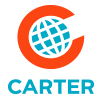

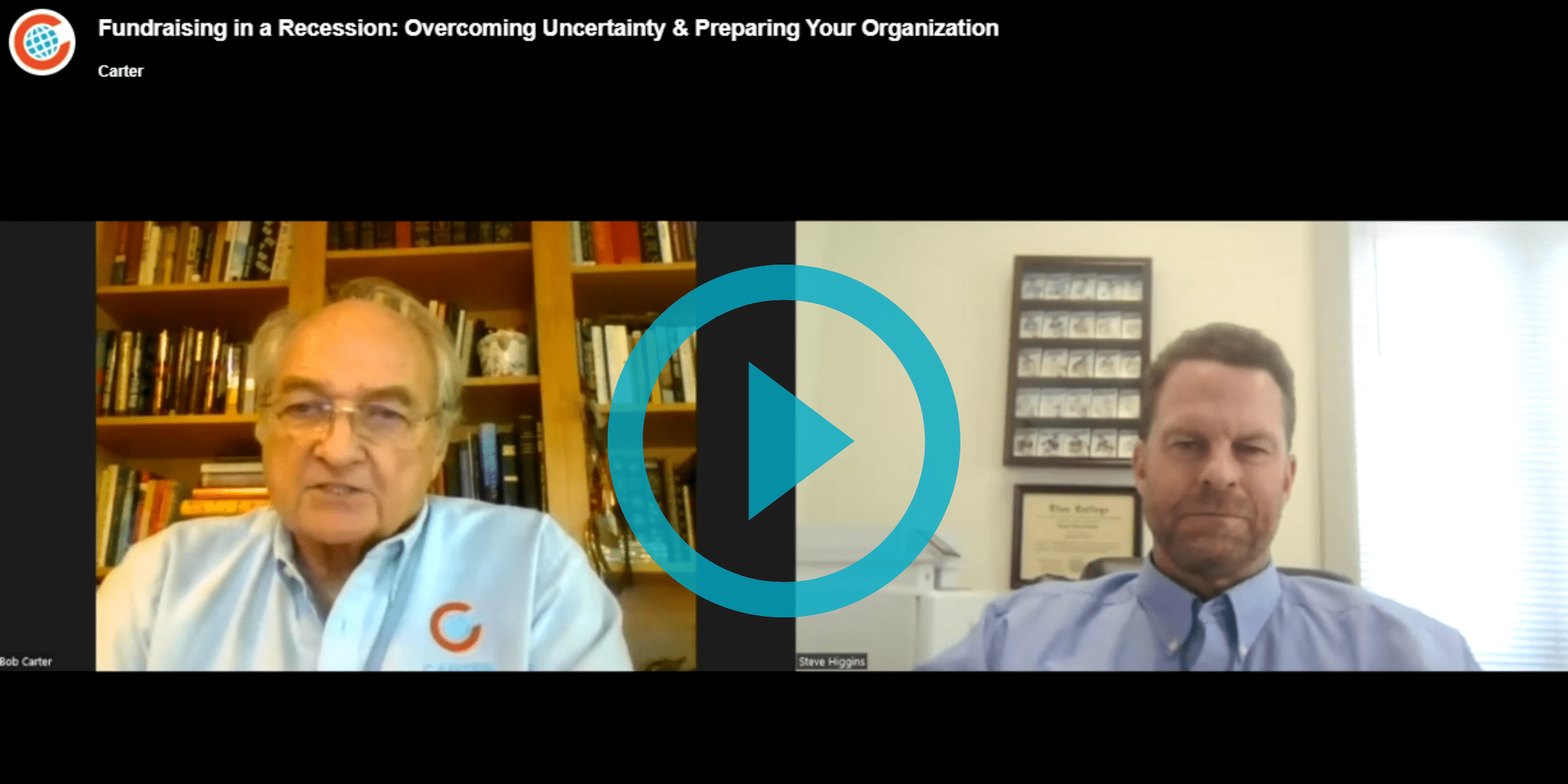




 You must ensure that you have earned the right to approach a donor with a gift opportunity that will inspire them to give at the high end of their capacity.
You must ensure that you have earned the right to approach a donor with a gift opportunity that will inspire them to give at the high end of their capacity.